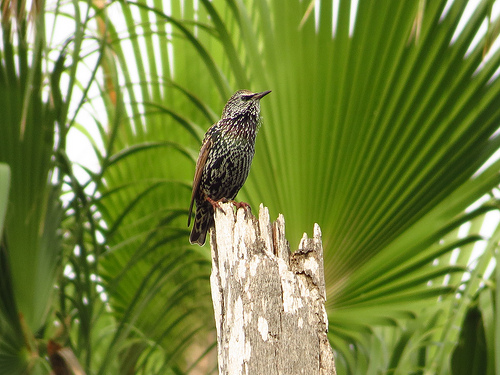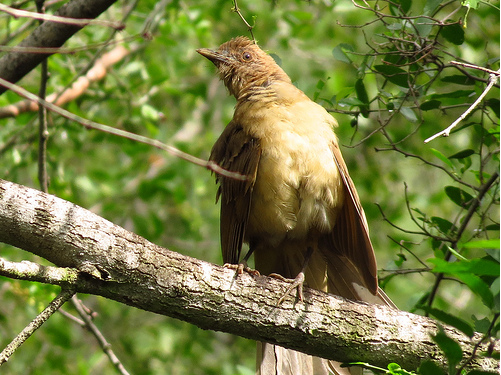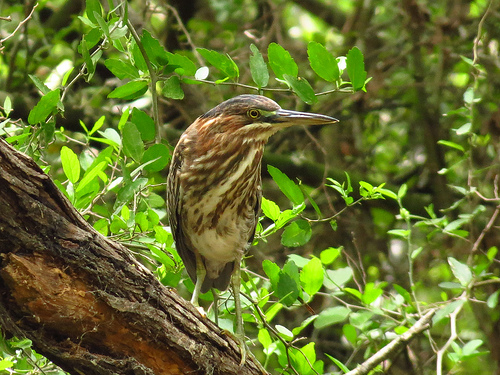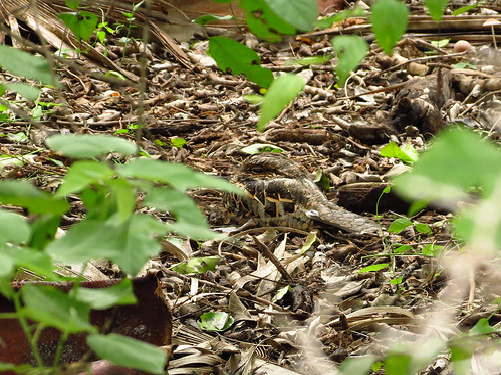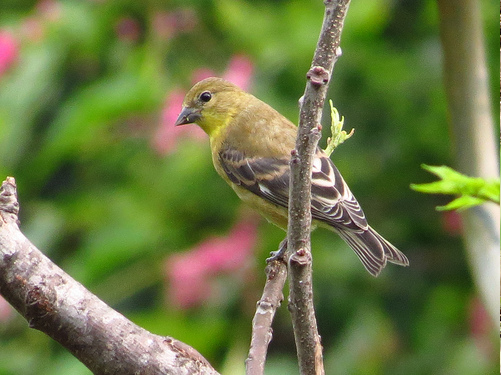This morning’s bird hike was nothing short of thrilling. Plain Chachalacas serenaded us with their repetitive calls. Inca Doves cooed softly with their gentle calls of “no hope.” Northern Mockingbirds filled the tree tops with chatter. The happy-toned songs of Lesser Goldfinches meandered throughout the thickets as these tiny finches fed on mid-summer seeds.
As the morning bird hike progressed, we came across a gorgeous Curve-billed Thrasher taking a delightful dust bath in ebony grove. Although it may seem desolate, the ground within ebony grove is packed with seeds that are ready to germinate when the timing and conditions are just right. The intermittent spacing between the young and old trees in the grove makes this area an insect-rich environment, which draws-in the bird numbers and bird diversity. Be sure to visit ebony grove when you are here birdwatching, as there are always birds flying overhead and feeding within the trees. Because of the dusty soil conditions existing within this area, ebony grove has become a favorite spot for Curve-billed Thrashers looking for refreshing dust baths on a regular basis!
With a careful set of ears, the Tropical Kingbird can be heard locally, as some of these individuals meander out of their more densely-populated areas of Mexico this time of year. This species is known for their twittering bursts of call notes. Tropical Kingbirds look extremely similar to Couch’s Kingbirds, which are a more-common year-round resident of the lower Rio Grande Valley. These two species can be differentiated by their call notes.
We were treated to some sunlit views of Golden-fronted Woodpeckers this morning. Both the adult female and adult male Golden-fronted Woodpeckers will have a golden-orange nape (back of the head and rear portion of the neck). The adult females will have a pale crown (top of the head), whereas the adult males will have a deep-red crown. Did you know that the only places where you can find Golden-fronted Woodpeckers in the lower 48 states, is in Texas and southwestern Oklahoma?
Below is the eBird list of birds observed during this morning’s bird hike.
Hope to see you at the upcoming bird hike this Saturday! Good birding,
Erik Bruhnke
Black-bellied Whistling-Duck 2
Plain Chachalaca 9
Swainson’s Hawk 1
Rock Pigeon (Feral Pigeon) 8
White-winged Dove 35
Mourning Dove 4
Inca Dove 4
Chimney Swift 10
Buff-bellied Hummingbird 3
Golden-fronted Woodpecker 4
Ladder-backed Woodpecker 2
Tropical Kingbird 1
White-eyed Vireo 1
Green Jay 1
Purple Martin 25
Black-crested Titmouse 2
Clay-colored Thrush 1
Curve-billed Thrasher 3
Long-billed Thrasher 1
Northern Mockingbird 14
European Starling 1
Olive Sparrow 1
Northern Cardinal 2
Great-tailed Grackle 11
Bronzed Cowbird 2
Orchard Oriole 3
Lesser Goldfinch 15
House Sparrow 18









